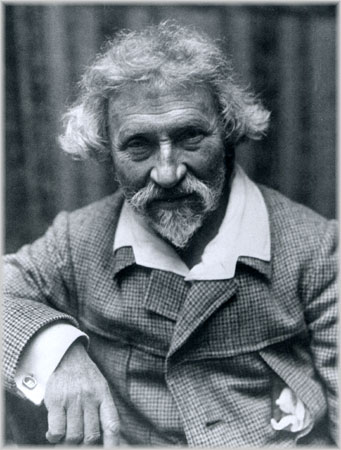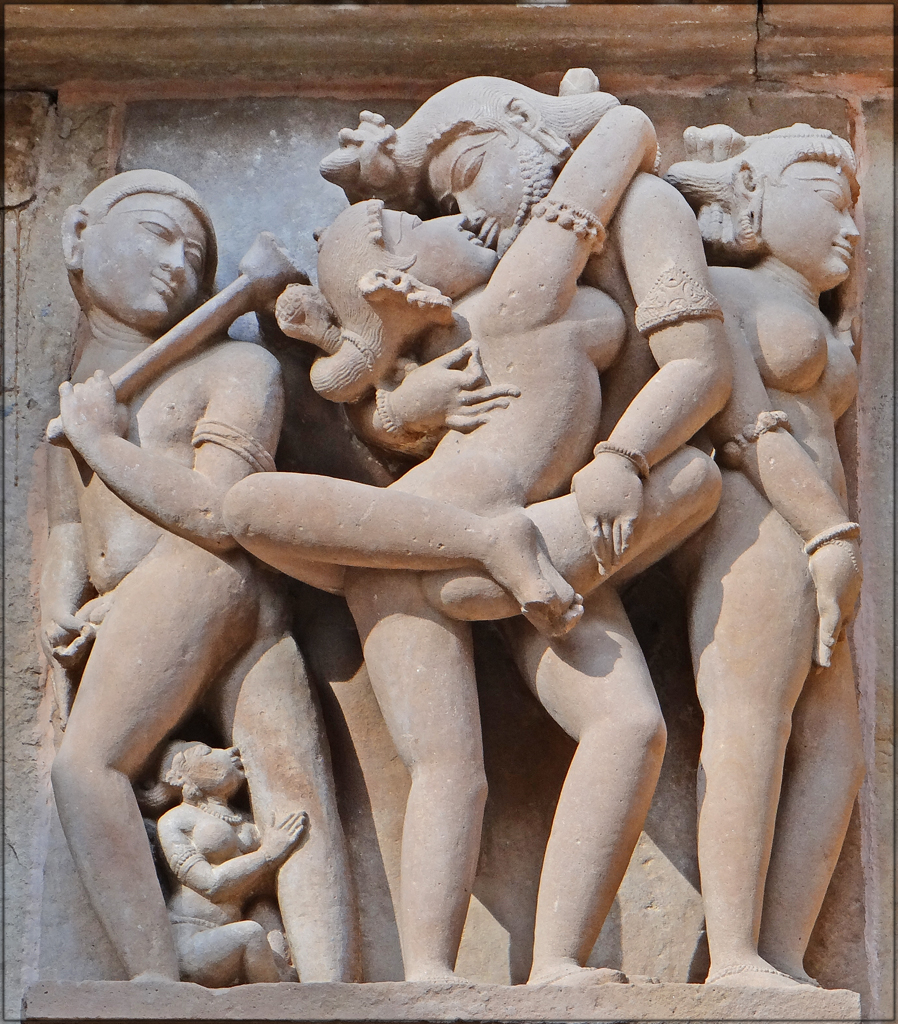|
Kuzma Petrov-Vodkin
Kuzma Sergeevich Petrov-Vodkin, (; November 5, Old_Style_and_New_Style_dates.html" ;"title="nowiki/> O. S. 24 October1878 – February 15, 1939) was a Russian and USSR">Soviet painter. His early iconographic work used special creative effects based on the curve of the globe, but its images were considered blasphemous by the Russian Orthodox Church. However he went on to become the first president of the Saint Petersburg Union of Artists">Leningrad Union of Soviet Artists. His autobiographical writings attracted much praise, and have enjoyed a later revival. Biography Early years Kuzma Petrov-Vodkin was born in Khvalynsk (Saratov Oblast) into the family of a local shoemaker. His first exposure to art was in his early childhood, when he took some lessons from a couple of icon painters and a signmaker. Still, Petrov-Vodkin didn't quite see himself in art at that time; after graduating from middle school, he took a summer job at a small shipyard with plans to get into railroa ... [...More Info...] [...Related Items...] OR: [Wikipedia] [Google] [Baidu] |
Khvalynsk
Khvalynsk ( rus, Хвалы́нск, p=xvɐˈlɨnsk) is a river port town in Saratov Oblast, Russia, located by the Volga River. Population: 16,000 (1974). It is located on the right bank of the Volga, at the foot of the Khvalynsk Mountains, northeast of Saratov and southwest of Samara. The place name stems from the old Russian name of the Caspian Sea: Хвалынское море, or "Khvalyn Sea". The latter is derived from the name "Khwalis" for the inhabitants of Khwarezm. The town is the namesake of the Khvalynsk Hills and Khvalynsk culture. History It was founded in 1556 as a Russian outpost on the Sosnovy Island on the Volga. In 1606, the whole settlement was relocated to the spot of today's Khvalynsk and came to be known as Sosnovy Ostrov (, lit. ''pine island''). In 1780, the settlement was granted uyezd town status and renamed Khvalynsk. In the 18th–19th centuries, Khvalynsk was known as a local center for trading bread and agricultural produce. It was also ... [...More Info...] [...Related Items...] OR: [Wikipedia] [Google] [Baidu] |
Isaak Levitan
Isaac Ilyich Levitan (russian: Исаа́к Ильи́ч Левита́н; – ) was a classical Russian landscape painter who advanced the genre of the "mood landscape". Life and work Youth Isaac Levitan was born in a shtetl of Kibarty, Augustów Governorate in Congress Poland, a part of the Russian Empire (present-day Lithuania) into a poor but educated Jewish family. His father Elyashiv Levitan was the son of a rabbi, completed a Yeshiva and was self-educated. He taught German and French in Kowno and later worked as a translator at a railway bridge construction for a French building company. At the beginning of 1870 the Levitan family moved to Moscow. In September 1873, Isaac Levitan entered the Moscow School of Painting, Sculpture and Architecture where his older brother Avel had already studied for two years. After a year in the copying class Isaac transferred into a naturalistic class, and soon thereafter into a landscape class. Levitan's teachers were the f ... [...More Info...] [...Related Items...] OR: [Wikipedia] [Google] [Baidu] |
Reverse Perspective
Reverse perspective, also called inverse perspective,. inverted perspective, divergent perspective, or Byzantine perspective, is a form of perspective drawing in which the objects depicted in a scene are placed between the projective point and the viewing plane. Objects farther away from the viewing plane are drawn as larger, and closer objects are drawn as smaller, in contrast to the more conventional linear perspective for which closer objects appear larger.. Lines that are parallel in three-dimensional space are drawn as diverging against the horizon, rather than converging as they do in linear perspective. Technically, the vanishing points are placed outside the painting with the illusion that they are "in front of" the painting. The name Byzantine perspective comes from the use of this perspective in Byzantine and Russian Orthodox icons; it is also found in the art of many pre-Renaissance cultures, and was sometimes used in Cubism and other movements of modern art M ... [...More Info...] [...Related Items...] OR: [Wikipedia] [Google] [Baidu] |
Perspective (graphical)
Linear or point-projection perspective (from la, perspicere 'to see through') is one of two types of graphical projection perspective in the graphic arts; the other is parallel projection. Linear perspective is an approximate representation, generally on a flat surface, of an image as it is seen by the eye. Perspective drawing is useful for representing a three-dimensional scene in a two-dimensional medium, like paper. The most characteristic features of linear perspective are that objects appear smaller as their distance from the observer increases, and that they are subject to ''foreshortening'', meaning that an object's dimensions along the line of sight appear shorter than its dimensions across the line of sight. All objects will recede to points in the distance, usually along the horizon line, but also above and below the horizon line depending on the view used. Italian Renaissance painters and architects including Masaccio, Paolo Uccello, Piero della Francesca and ... [...More Info...] [...Related Items...] OR: [Wikipedia] [Google] [Baidu] |
Anna Akhmatova
Anna Andreyevna Gorenko rus, А́нна Андре́евна Горе́нко, p=ˈanːə ɐnˈdrʲe(j)ɪvnə ɡɐˈrʲɛnkə, a=Anna Andreyevna Gorenko.ru.oga, links=yes; uk, А́нна Андрі́ївна Горе́нко, Ánna Andríyivna Horénko, . ( – 5 March 1966), better known by the pen name Anna Akhmatova,. was one of the most significant Russian poets of 20th century. She was shortlisted for the Nobel Prize in 1965 and received second-most (three) nominations for the award the following year. Akhmatova's work ranges from short lyric poems to intricately structured cycles, such as ''Requiem'' (1935–40), her tragic masterpiece about the Stalinist terror. Her style, characterised by its economy and emotional restraint, was strikingly original and distinctive to her contemporaries. The strong and clear leading female voice struck a new chord in Russian poetry.Harrington (2006) p. 11 Her writing can be said to fall into two periods – the early work (1912–25) a ... [...More Info...] [...Related Items...] OR: [Wikipedia] [Google] [Baidu] |
Blasphemy
Blasphemy is a speech crime and religious crime usually defined as an utterance that shows contempt, disrespects or insults a deity, an object considered sacred or something considered inviolable. Some religions regard blasphemy as a religious crime, especially the Abrahamic religions, including the speaking the " sacred name" in Judaism and the " eternal sin" in Christianity. In the early history of the Church heresy received more attention than blasphemy because it was considered a more serious threat to Orthodoxy. Blasphemy was often regarded as an isolated offense wherein the faithful lapsed momentarily from the expected standard of conduct. When iconoclasm and the fundamental understanding of the sacred became more contentious matters during the Reformation, blasphemy was treated similar to heresy, and accusations of blasphemy were made not only against people who made off-the-cuff profane remarks while drunk, but against those types of persons who espoused unorthodox ... [...More Info...] [...Related Items...] OR: [Wikipedia] [Google] [Baidu] |
Ilya Repin
Ilya Yefimovich Repin (russian: Илья Ефимович Репин, translit=Il'ya Yefimovich Repin, p=ˈrʲepʲɪn); fi, Ilja Jefimovitš Repin ( – 29 September 1930) was a Russian painter, born in what is now Ukraine. He became one of the most renowned artists in Russia during the 19th century. His major works include ''Barge Haulers on the Volga'' (1873), '' Religious Procession in Kursk Province'' (1880–1883), '' Ivan the Terrible and His Son Ivan'' (1885); and '' Reply of the Zaporozhian Cossacks'' (1880–1891). He is also known for the revealing portraits he made of the leading literary and artistic figures of his time, including Mikhail Glinka, Modest Mussorgsky, Pavel Tretyakov and especially Leo Tolstoy, with whom he had a long friendship. Repin was born in Chuguyev, in Kharkov Governorate of the Russian Empire. His father had served in an Uhlan Regiment in the Russian army, and then sold horses. Repin began painting icons at age sixteen. He failed at his ... [...More Info...] [...Related Items...] OR: [Wikipedia] [Google] [Baidu] |
Alexandre Benois
Alexandre Nikolayevich Benois (russian: Алекса́ндр Никола́евич Бенуа́, also spelled Alexander Benois; ,Salmina-Haskell, Larissa. ''Russian Paintings and Drawings in the Ashmolean Museum''. pp. 15, 23-24. Published by Ashmolean Museum, 1989 Saint Petersburg9 February 1960, Paris) was a Russian artist, art critic, historian, preservationist and founding member of '' Mir iskusstva'' (World of Art), an art movement and magazine.Owen, Bobbi. ''Costume Design on Broadway: Designers and Their Credits, 1915-1985''. p. 19 Greenwood Press: New York, 1987 As a designer for the Ballets Russes under Sergei Diaghilev, Benois exerted what is considered a seminal influence on the modern ballet and stage design. Early life and education Alexandre was born into the artistic and intellectual Benois family, prominent members of the 19th- and early 20th-century Russian intelligentsia. His mother Camilla (Russian: Камилла Альбертовна Кавос, and the ... [...More Info...] [...Related Items...] OR: [Wikipedia] [Google] [Baidu] |
Erotic
Eroticism () is a quality that causes sexual feelings, as well as a philosophical contemplation concerning the aesthetics of sexual desire, sensuality, and romantic love. That quality may be found in any form of artwork, including painting, sculpture, photography, drama, film, music, or literature. It may also be found in advertising. The term may also refer to a state of sexual arousal or anticipation of such – an insistent sexual impulse, desire, or pattern of thoughts. As French novelist Honoré de Balzac stated, eroticism is dependent not just upon an individual's sexual morality, but also the culture and time in which an individual resides. Definitions Because the nature of what is erotic is fluid, early definitions of the term attempted to conceive eroticism as some form of sensual or romantic love or as the human sex drive (libido); for example, the ''Encyclopédie'' of 1755 states that the erotic "is an epithet which is applied to everything with a connection ... [...More Info...] [...Related Items...] OR: [Wikipedia] [Google] [Baidu] |
Russian Orthodox Church
, native_name_lang = ru , image = Moscow July 2011-7a.jpg , imagewidth = , alt = , caption = Cathedral of Christ the Saviour in Moscow, Russia , abbreviation = ROC , type = , main_classification = Eastern Orthodox , orientation = Russian Orthodoxy , scripture = Elizabeth Bible (Church Slavonic language, Church Slavonic)Russian Synodal Bible, Synodal Bible (Russian language, Russian) , theology = Eastern Orthodox theology , polity = Episcopal polity, Episcopal , governance = Holy Synod of the Russian Orthodox Church , structure = Koinonia, Communion , leader_title = , leader_name = , leader_title1 = Primate , leader_name1 = Patriarch of Moscow and all Rus', Patriarch Patriarch Kirill of Moscow, Kirill of Moscow , leader_title2 = , leader_name2 = , leader_title3 = Bishops , leader_ ... [...More Info...] [...Related Items...] OR: [Wikipedia] [Google] [Baidu] |
Bathing Of A Red Horse (Petrov-Vodkin)
Bathing is the act of washing the body, usually with water, or the immersion of the body in water. It may be practiced for personal hygiene, religious ritual or therapeutic purposes. By analogy, especially as a recreational activity, the term is also applied to sun bathing and sea bathing. People bathe at a range of temperatures, according to custom or purpose, from very cold to very hot. In the western world, bathing is usually done at comfortable temperatures in a bathtub or shower. This type of bathing is done more or less daily for hygiene purposes. A ritual religious bath is sometimes referred to as immersion or baptism. The use of water for therapeutic purposes can be called a water treatment or hydrotherapy. Recreational water activities are also known as swimming and paddling. History Ancient world Throughout history, societies devised systems to enable water to be brought to population centers. The oldest accountable daily ritual of bathing can be trace ... [...More Info...] [...Related Items...] OR: [Wikipedia] [Google] [Baidu] |
.jpg)







_02.jpg)